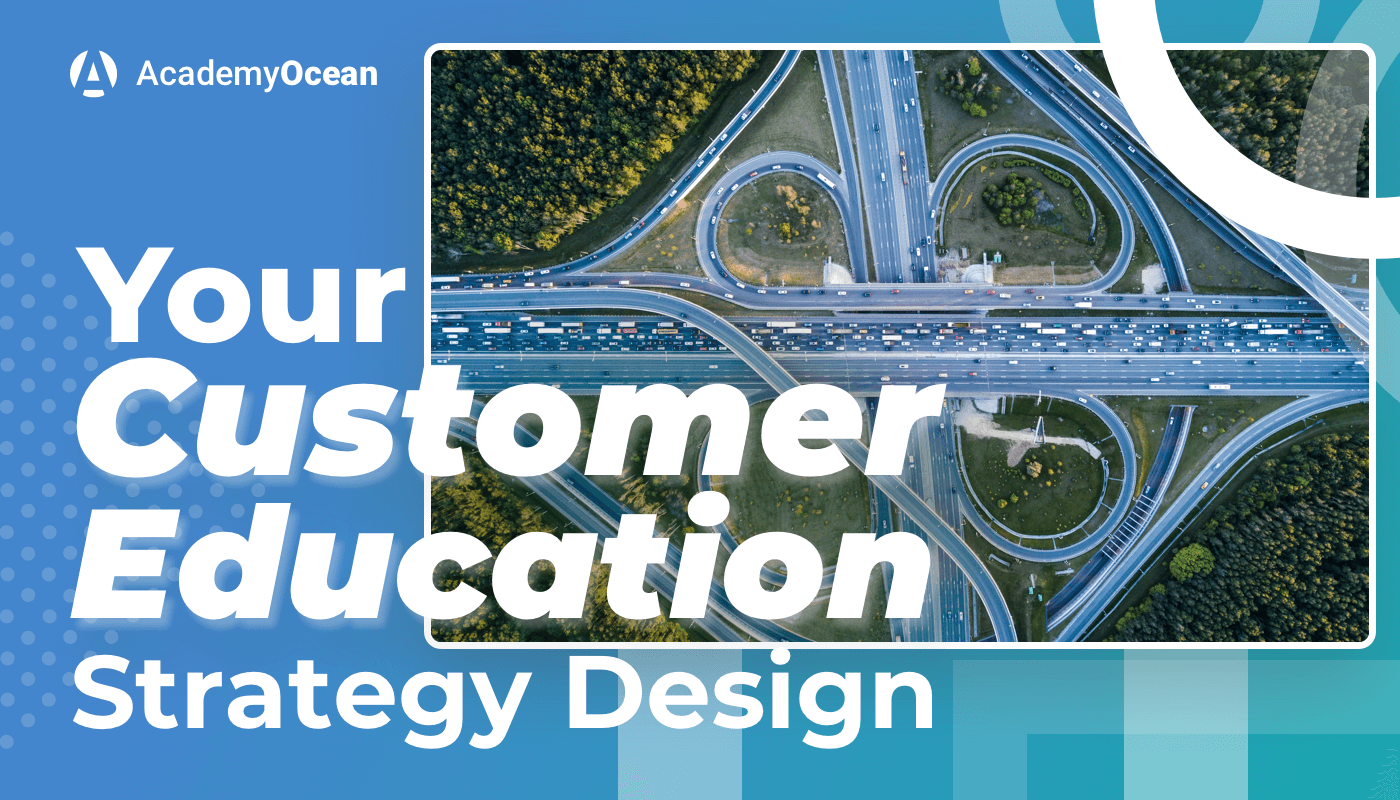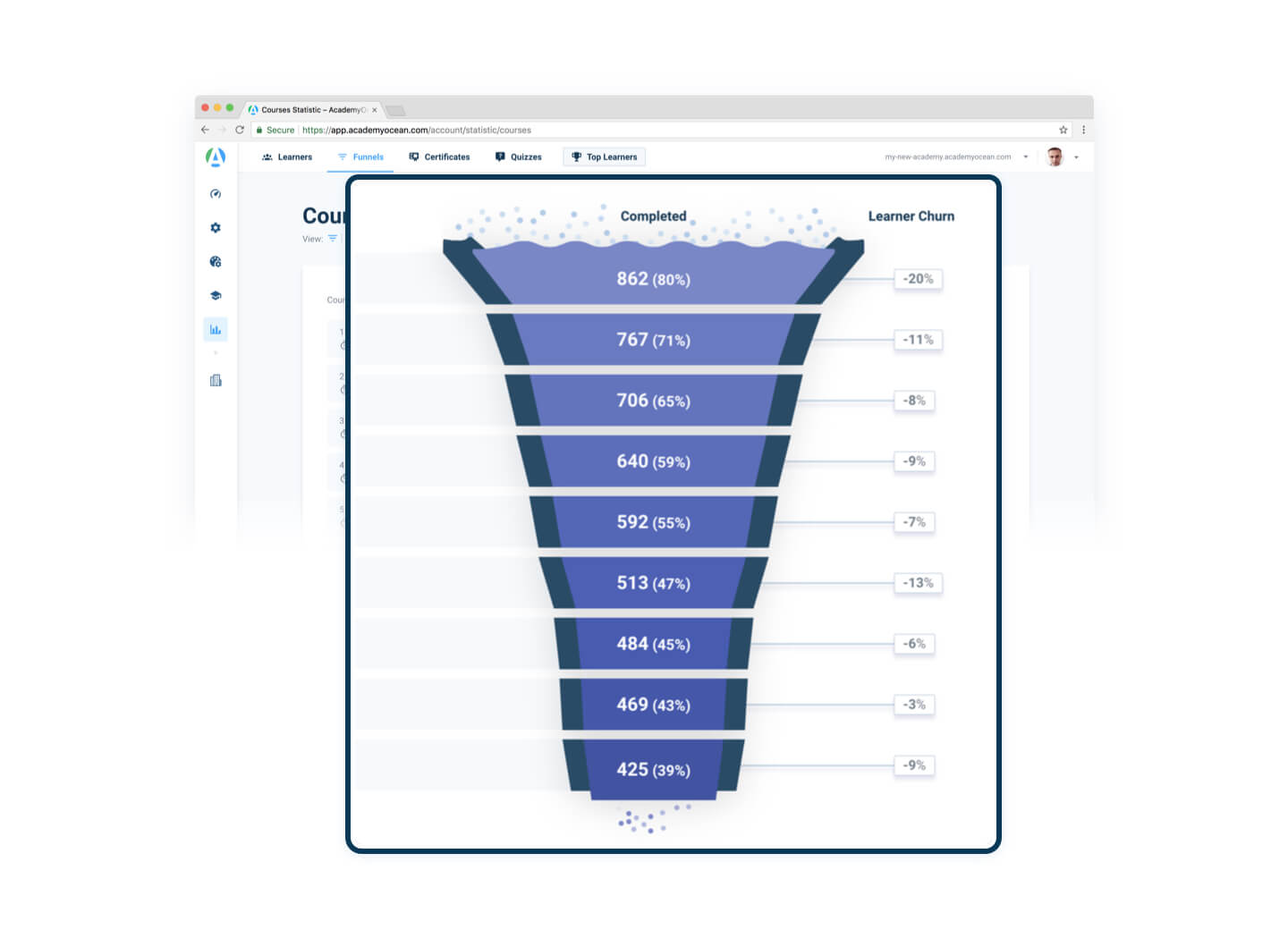Your Customer Education Strategy Design

Customer education is a challenge itself. Without a plan, it’s carpet bombing. To deliver it right and receive maximum output you need to have a well-thought-out plan or rather a strategy. As it is said that success is only 20% skills and 80% strategy. So, let’s raise your chances to excel.
What is a strategy?
The strategy is a method or plan which helps you achieve one or more goals or solutions to your problems in conditions of uncertainty.
According to Ellie Pidot, the Vice-president, Enterprise Excellence and Business Transformation at Medtronic:
“Strategy is a fancy word for coming up with a long-term plan and putting it into action”.
Or in plain words, it’s what you should do and, what is more important, what you probably shouldn’t do to succeed.
Who is customer education strategy for?
It will help people involved in customer training overcome customer challenges. It also can be useful for your content department, customer service department, customer success department, the marketing department.
For instance, your company has a brand-new product which has just been launched on the market and needs to become widespread quickly. But nobody knows what to do with it yet, what value it may bring.
There is another case when you keep losing customers to your competitors and you need an iron-clad plan or rather strategy to stop it and increase your customer satisfaction.
Why would you need it?
In fact, education has a great impact on product adoption.
Those customers who are completing education use the product more often. What is more important, they also use more features and functions. You know that you have sticky features and once you make your customers use them they’re likely to renew their subscription and come back to you.
The strategy helps find solutions and fulfil business tasks. For instance, if the task at hand is to increase Net Promoter Score then the strategy will outline the way to achieve that goal.
It also helps structure and convert your existing product knowledge base into a well-thought-out plan of developing teaching processes.
In terms of your business development, you will have a documented plan which can be discussed and negotiated with an executive team in a way that would contribute to the company’s success.
Now it’s time to take a closer look at how to do it.
Steps of Customer Education Strategy Design

There are three main steps to make your customer education strategy a success.
Determine and align your goals
Determine one or two goals to attack your main problem and align them with your executive team’s goals. Because if your education goal is not in line with what your company plans then all you will be doing is wasting too much efforts and time.
There is one way to reconcile your education goals with what business wants. You need to analyze:
- what the customer needs are;
- what the business needs are;
- what you can deliver with the resources and skills that you have as an education team.
If you manage to make all of them overlap — great, all your goals will contribute to your success. But even if your executive team asks for more than you can deliver or for something which does not match customer needs, then having a documented strategy you will be ready to negotiate with them and elaborate the way out.
Examples of aligning your goals:
Business goal: we need to increase our revenue by 50% by the end of the year.
Education goal: let’s create a new private course for large enterprises. Let’s sell 12 of them to improve our company’s revenue.
Business goal: CEO asks us to increase renewal rates to 90% by the end of the year.
Education goal: let’s create a new course targeting unused features, promote it and train customers to use those features to contribute to their customer success.
Business goal: reduce customer onboarding time from 6 to 3 weeks by the end of the 3rd quarter.
Education goal: create a new course for the beginners and make sure all new customers take it.
So, the most important thing is aligning your education goals with your business, not just set a goal.
After it, armed with goals and tools you may move to the assessment stage.
Assess your current state of customer education

One of the most important steps. You just stop, define where you are now and then have some aspirations as to where you want to be.
We suggest 4 stages of your education strategy maturity. Define where your company is:
- Responsive stage — you mainly react to your customers’ requests through customer support and educate them with the help of FAQs and knowledge bases;
- Executing stage — you’ve got your first client base and even some repeated customers, you handle 80% of their needs. You are proactive and add educational videos and webinars to your customer training;
- Scaling stage — that’s when you realize you need to put your education process on track. To do it you need a customer education tool like AcademyOcean to structure your content and present it in easy-to-consume pieces or even create self-paced educational courses;
- Optimizing stage — this is the stage where you improve your customer education by analyzing the data you’ve gathered during the whole process. It’s important to control your customer training and track its efficiency. Old educational tools lack statistical data, so we made sure our academy builder is tracking all the important metrics (quiz scores, completion tracking, learner churn rate and even the exact places where users drop off) needed to pinpoint the weak spots within customer education.

Understanding which stage your company is on is paramount for building a working educational strategy.
After you’ve determined and aligned your education and business goals, assessed what stage of customer training your company is on, it’s time to create a roadmap of your customer education journey.
Create a roadmap

People responsible for education can have an enormous impact on the credibility of the business by using a roadmap approach to how they are going to build an education function. Now it’s time to get into details on how to execute the plan and create a roadmap.
According to Morris Chang:
“Without the strategy, execution is aimless. Without execution, the strategy is useless”.
There are three reasons you really need it:
- you personally must know where you’re going. Even if you don’t know the details, you will have an outline;
- you can communicate your goals. You can go to the executive team and show what you’re planning to do, where you are and what your gaps are;
- a roadmap will keep you from deviating and taking on tasks that may delay your goals or stop you from reaching them altogether.
Roadmap gives us the ability to look into the future. Most of us are really bad at what we can achieve in the long run. People tend to over-promise and under-deliver. So just break your process into small steps. It will double the chances that you will keep up with the plan.
Conclusions
Education strategy design is a complicated process. To make it a success you need to:
- Determine your customer education goals and align them with your business goals;
- Assess your current state of customer education;
- Create a roadmap to know where you’re going and communicate your goals to others.
Keep in mind that education strategy is not an advertising campaign for a couple of months, it’s a long-term commitment with long-term results so having a strong and flexible strategy combined with the right tools is the key to success both for you and your customers.